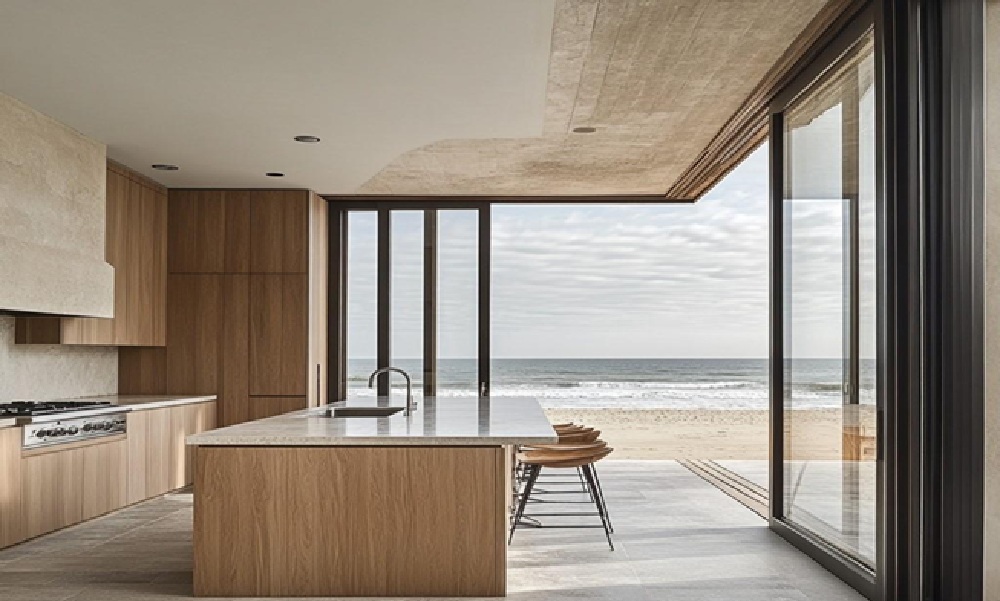It started with a drawer I hadn’t opened in months. Inside were six spatulas, four measuring cups, and a hand mixer I hadn’t used since the early 2000s. That drawer wasn’t just cluttered—it was heavy. And truth be told, so was I.
Not physically, but mentally. Every time I walked into my kitchen, I felt overwhelmed. Counters were crowded, cabinets were overflowing, and I was constantly shifting items around just to make space for breakfast. After turning 65, I realized something had to change—not just for my home, but for my peace of mind.
That’s when I discovered the power of a minimalist kitchen.
Minimalism isn’t about living with nothing—it’s about living with only what truly matters. And for those of us in our golden years, a simple, functional kitchen can offer more than just convenience. It can offer calm, safety, and even joy.
Why Go Minimal? The Emotional and Practical Benefits
The first thing I noticed after decluttering? Less visual chaos meant less stress.
A minimalist kitchen strips away what you don’t need so you can actually enjoy what you do. No more hunting for your favorite pan. No more knocking over stacks of plates just to reach your coffee mug. Just calm counters and cabinets that work with you, not against you.
Practically speaking, a minimalist space is easier to clean, safer to move around in, and kinder to tired joints and stiff hands. But emotionally? It’s liberating. You let go of the guilt tied to unused items. You make room—not just on your shelves, but in your head—for what really matters.
And let’s not forget: clear spaces often lead to clearer thinking.
Decluttering the Right Way: A Gentle Step-by-Step Guide
If the thought of cleaning out your whole kitchen feels overwhelming, don’t worry. You don’t have to do it all at once. I started with one drawer. Then one shelf. And day by day, it added up.
Here’s a simple approach to kitchen decluttering for seniors:
- Start small. Choose one drawer or one shelf to tackle at a time.
- Use the “Daily Use” Rule. If you haven’t used an item in the past month, ask yourself: Do I really need this?
- Create a “Maybe Later” box. For sentimental or unsure items—store them out of sight for 30 days. If you don’t miss them, let them go.
- Keep surfaces clear. Aim for at least 80% of your counter to be empty. It’s safer, cleaner, and so much more peaceful.
This method isn’t just effective—it’s gentle. You’re not getting rid of your past. You’re curating your present.
The Essentials Only: What Belongs in a Minimalist Senior Kitchen
A minimalist kitchen doesn’t mean a bare kitchen—it means a kitchen that only includes what works.
Here’s what I kept, and what I recommend:
- One set of dishes and glasses (plus a few extras for guests)
- Two pots, two pans, one kettle—all I truly use
- Sharp knife, cutting board, spatula, tongs, measuring set
- One mixing bowl, one colander, one baking tray
- Appliances I use regularly: toaster oven, electric kettle, microwave
I donated my old stand mixer, retired duplicate utensils, and moved seasonal cookware to labeled bins in the garage.
Tip: If you haven’t used it in the last 60 days, it doesn’t belong on your countertop.
Smart Design for Comfort and Ease
Once I pared things down, I turned my attention to making the kitchen more senior-friendly. You’d be amazed how small tweaks can make a big difference.
Here’s what I upgraded:
- Easy-grip handles on all cabinets and drawers (no more struggling with knobs)
- Pull-out shelves to avoid bending and reaching
- Non-slip mats placed near the sink and stove
- Under-cabinet lighting to eliminate shadows and improve visibility
- Neutral paint tones like soft cream and warm white to create a sense of calm
Midway through, I realized something funny: I wasn’t just simplifying the kitchen. I was simplifying how I lived in it.
Now, every item has a place. There’s room to move, stretch, and even dance a little while I wait for my tea.
Living with Less, Feeling More: The Daily Joy of a Minimalist Kitchen
Three months after my minimalist kitchen makeover, here’s what’s changed:
- I cook more often—and enjoy it more
- Cleaning takes half the time
- I stop and breathe more often at the counter
- My grandkids can find their favorite mugs without asking
- I actually feel at home in my kitchen again
There’s something so deeply satisfying about opening a drawer and seeing only what you need. Or standing at your counter and feeling nothing in the way—not even your thoughts.
Minimalism didn’t take anything from me. It gave me back my space, my confidence, and a quiet kind of happiness I didn’t expect.
Conclusion: A Kitchen That’s Light on Things, Heavy on Comfort
You don’t have to tear out your cabinets or buy expensive appliances. You just have to ask yourself: What do I really need? And then take it one drawer at a time.
A minimalist kitchen is more than a design trend—it’s a lifestyle shift. For seniors, it means less strain, more peace, and easier days. It’s a chance to fall back in love with your home—starting in the room you use every day.
So, if your kitchen feels heavy, chaotic, or just plain exhausting… start small. Let go of what no longer serves you. Make space for what does.
Because in the quiet simplicity of a well-loved kitchen, you just might find something magical: yourself.




